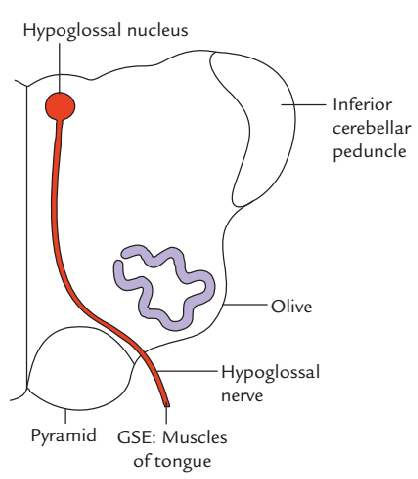The cranial nerve involved in moving the tongue is thea. trigeminal (V). d. accessory (XI).b. facial (VII). e. hypoglossal (XII).c. glossopharyngeal (IX).
The cranial nerve involved in moving the tongue is the
a. trigeminal (V). d. accessory (XI).
b. facial (VII). e. hypoglossal (XII).
c. glossopharyngeal (IX).
Cranial nerves are the two nerves that are responsible in connecting your brain to different parts of the body such as head, neck, and trunk. There are 12 of them, each named after their work or structure. Each sensor has corresponding Roman numerals between I and XII.
The hypoglossal nerve activates language movement. It controls the muscles of the hyoglossus, intrinsic, genioglossus and styloglossus. These muscles help you to speak, swallow, and move objects through your mouth.
The hypoglossal nerve is primarily a somatic efferent (motor) system of nerve preservation of the tongue muscles. The nerve also contains sensitive postganglionic fibers from the cervical ganglia, which include the lining of the tongue and other small glands in the cervical canal.
The hypoglossal nerve has four branches: meningeal, dorsal, thyrothyroid, and muscular. However, only a muscle branch is considered part of the real hypoglossal nerve from the hypoglossal nucleus. Some branches appear in the spinal cord (especially C1 / C2) or the cervical ganglia. The meningeal branch extends from the C1 and C2 nerves to the posterior cranial fossa. The descending branch holds data from C1 and then C2 / C3 to block the neck muscles. The thyrothyroid branches hold the thyrohyoid muscles in the neck. The lower and thyrohyoid branches are mainly from the cervical plexus.
The muscular / lingual branch is a normal somatic efferent branch (GSE) and maintains all the muscles of the tongue (both internal and external), except the palatoglossus, which receives motor retention from the vagal nerve (CN X). The muscle branch controls many language actions including, exiting, retracting, compressing the tongue, and changing the shape of the tongue.

Step by step
Solved in 3 steps with 1 images








